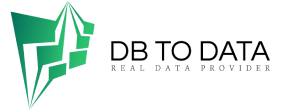Cracking the Code:
Keywords: consulting firm lead generation, data analytics, lead generation strategy, data-driven consulting, AI in consulting, lead scoring, customer segmentation, predictive analytics
In today’s data-driven world, consulting firms that harness the power of analytics are poised to outshine their competitors. While traditional methods like networking and referrals remain valuable, integrating code-based data analysis into your lead generation strategy can unlock a new dimension of growth and efficiency.
Understanding the Code Behind the Leads
At its core, lead generation is about identifying and nurturing potential clients. Data analytics provides the tools to transform this process from a hit-or-miss approach to a precision-guided missile. By leveraging code, consulting firms can:
- Identify Ideal Customer Profiles (ICPs): Delve into customer data to uncover patterns and trends that define your ideal client. These insights can be used to create highly targeted marketing campaigns.
- Predict Customer Behavior: Employ predictive analytics to forecast customer actions, such as purchase likelihood or churn rate. This allows you to proactively address potential issues and tailor your offerings accordingly.
- Optimize Lead Scoring: Develop a robust lead scoring model that prioritizes leads based on their potential value. This ensures your sales team focuses on the most promising opportunities.
- Personalize the Customer Journey: Use data to create customized experiences for each lead. Personalized content and messaging can significantly improve conversion rates.
- Measure and Improve: Continuously track and analyze campaign performance to identify what’s working and what’s not. Data-driven insights enable you to refine your strategy for optimal results.
The Role of Code in Lead Generation
Code is the language through which data is transformed into actionable insights. By integrating coding skills into your team or partnering with data scientists, you can:
- Build Custom Data Pipelines: Efficiently Telemarketing Lead collect and process data from various sources.
- Develop Predictive Models: Create algorithms to forecast customer behavior and market trends.
- Automate Lead Nurturing: Implement automated workflows to deliver personalized content at the right time.
- Optimize Marketing Spend: Allocate budget based on data-driven ROI analysis.
- Uncover Hidden Opportunities: Identify untapped market segments or new service offerings.
Case Study: A Data-Driven Consulting Success
[Insert a real-world example of a consulting firm that successfully used data analytics to drive lead generation. Highlight specific code-based tools or techniques employed.]
Conclusion
Incorporating code into your consulting firm’s lead generation strategy is no longer optional but essential. By unlocking the power of data, you cell phones lead to anxiety can gain a competitive edge, improve efficiency, and drive sustainable growth. Remember, the key to success lies in combining human expertise with cutting-edge technology.
Would you like to delve deeper into a specific aspect of data-driven lead generation, such as lead scoring, customer segmentation, or predictive analytics?


